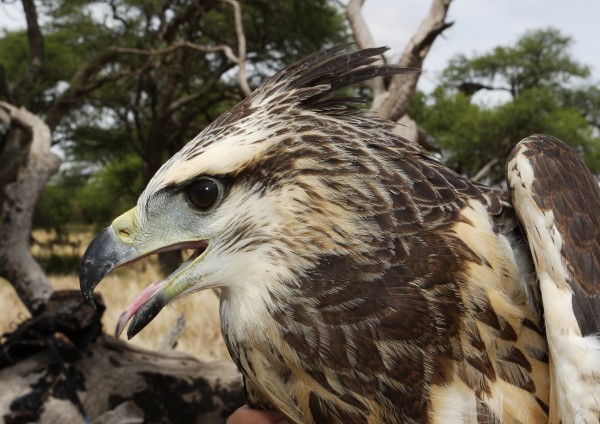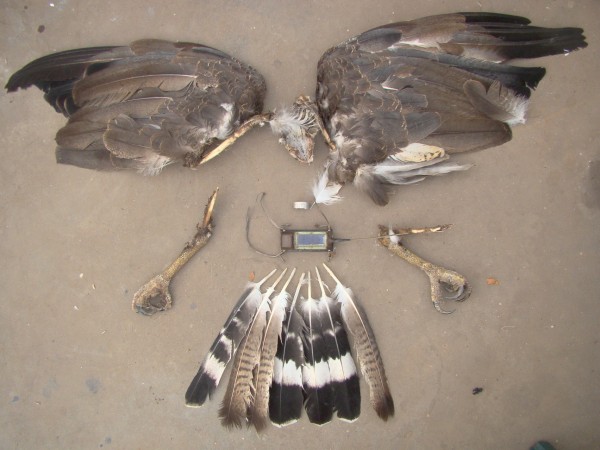Another crowned eagle lost
Camellia at Kemps Lake – I-264 6/26
June 26, 2013Camellia at Carolanne Farms – Kempsville 6/29
June 29, 2013
In April, CCB biologists received the news from Argentina that another crowned solitary eagle had been lost, providing more insight into the unfolding story of this highly endangered species. A victim of electrocution, the young eagle is the third bird included in a collaborative tracking project to be lost in the past year. Two of the birds (including this individual) were lost to pole electrocutions and the third was shot.

Bryan Watts holds the lost crowned eagle on the day of transmitter deployment. Photo by Bart Paxton.
This remarkable eagle is critically endangered with a declining global population estimated to be well below 1,000 individuals. The species is classified as endangered on the IUCN Red List, is included on the threatened lists of both Brazil and Argentina and is presumed extirpated in Uruguay with no reported sightings since 1933. Extremely little is known about crowned eagle population biology and basic ecology. The collaborative project between CCB and The Center for the Study of Birds of Prey in Argentina has been tracking 10 young eagles to learn more about the period of post-fledging dependency, dispersal and survival. Virtually nothing is known about the period in the life cycle between fledging and breeding.
Above-ground electrical lines present hazards for birds on a global scale and are particularly problematic for large birds of prey such as the crowned eagle. Birds are electrocuted when they touch two energized elements simultaneously and complete the electrical circuit. Bird-safe practices have been developed by industry to prevent or reduce electrocutions but have not been implemented in all areas. The loss of several crowned eagles in recent years to electrocution suggests that mitigation is urgently needed within their range.

Carcass of juvenile crowned eagle recovered under power pole by Maxi Galmes and Manu Grande. Photo by Maxi Galmes.
The crowned eagle has a very low reproductive rate, producing a maximum of only 1 young per year. This life-history strategy is not sustainable without relatively high survival. In addition to habitat loss, juvenile and/or adult mortality from human sources may play an important role in the ongoing decline. The ongoing tracking study is intended to quantify survival to breeding age.
Written by
Bryan Watts | bdwatt@wm.edu | (757) 221-2247
June 27, 2013



